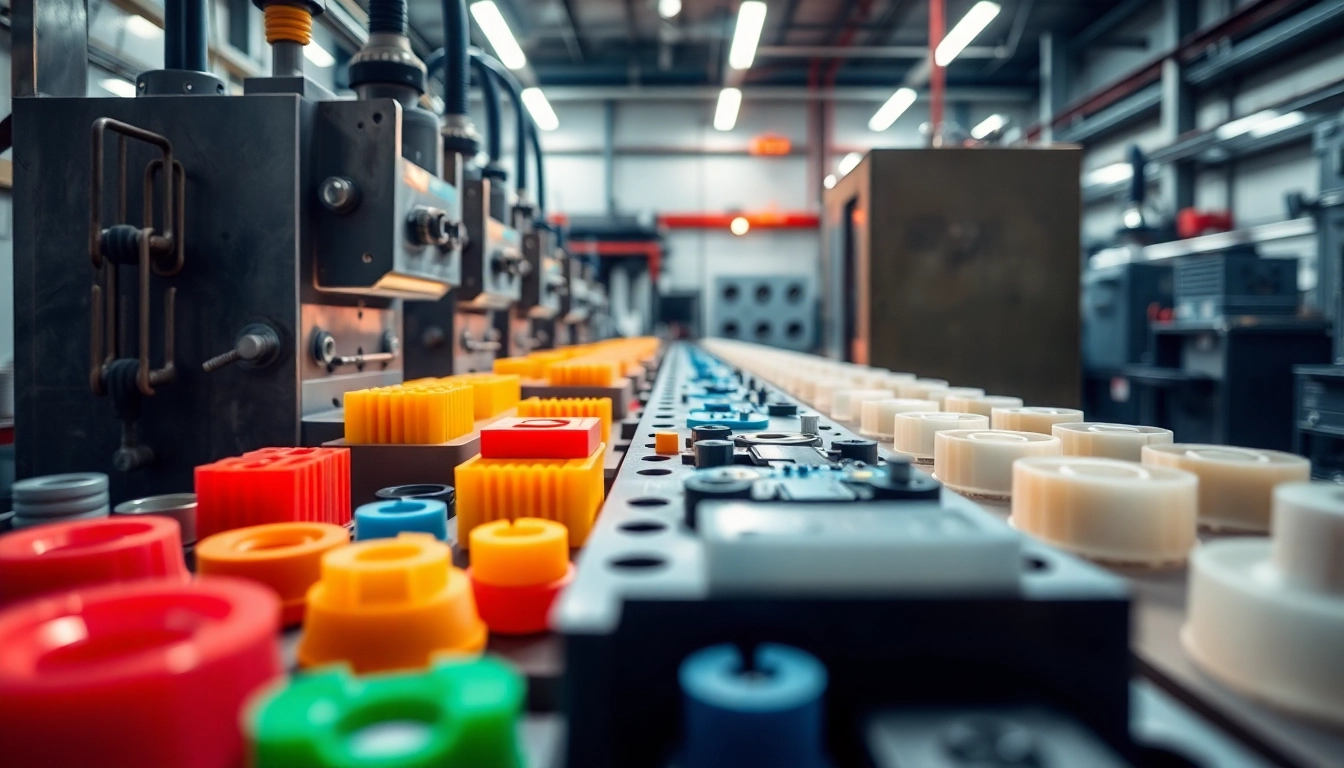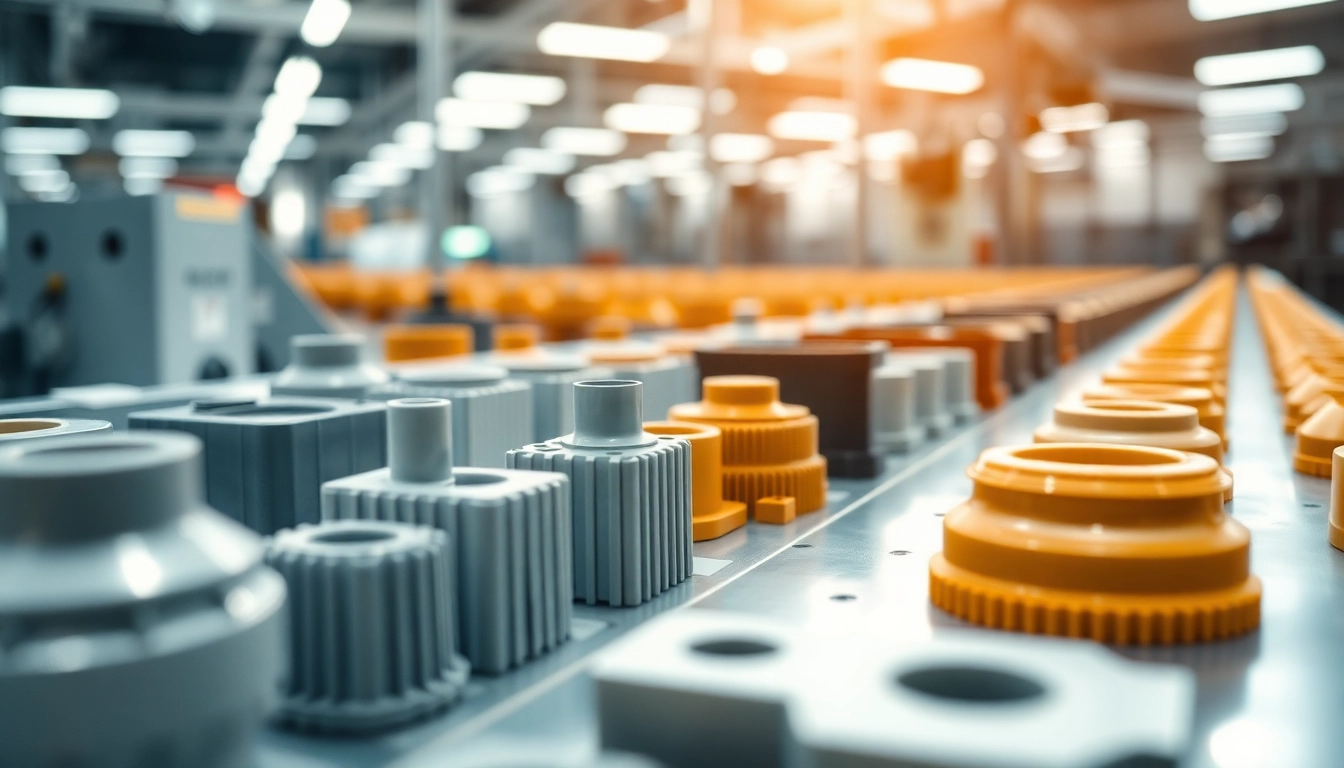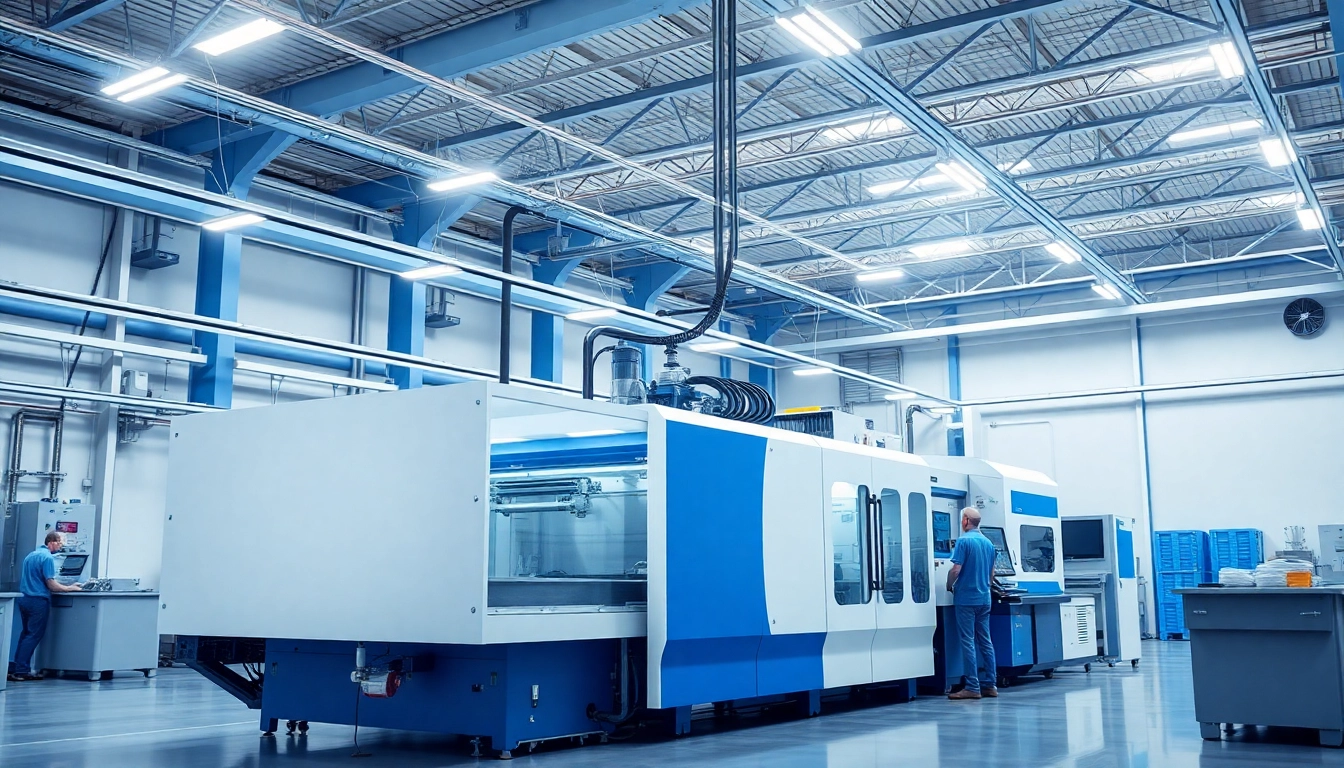Introduction to Injection Molded Parts
What Are Injection Molded Parts?
Injection molded parts are components created using a manufacturing process where molten material, typically plastic, is injected into a mold. This method allows for the production of complex shapes with precise dimensions and details. The versatility of injection molding makes it a popular choice across various industries, from consumer products to automotive and medical applications. The resulting parts can range from small components, such as knobs and clips, to large items like automotive body panels.
The injection molded parts process employs a range of polymers, including thermoplastics and thermosetting plastics, which contribute to the functionality and characteristics of the final product.
The Importance of Injection Molding in Manufacturing
Injection molding is one of the most efficient and cost-effective manufacturing processes used today. It enables the mass production of high-quality components with minimal waste. With the ability to produce thousands of identical parts rapidly, businesses can cater to high demand without incurring excessive costs. This efficiency not only enhances productivity but also accelerates time-to-market for new products.
Additionally, injection molding offers flexibility in design, allowing engineers to create detailed features that are difficult to replicate using other fabrication methods. As a result, it plays a crucial role in industries like consumer electronics, automotive, and healthcare, where precision and reliability are paramount.
Key Terminology You Should Know
- Mold: A hollowed out block used to give shape to molten material.
- Clamping Unit: The part of the machine that holds the mold in place under pressure.
- Injection Unit: The component that melts and injects the material into the mold.
- Ejector Pins: Tools used to remove the molded part from the mold after cooling.
- Sprue: The canal through which molten material flows into the mold.
How the Injection Molding Process Works
Step-by-Step Overview of the Injection Molding Process
The injection molding process can be broken down into several key steps:
- Material Loading: Plastic pellets are loaded into a hopper, where they are pre-heated to facilitate melting.
- Injection: A screw or plunger forces the molten plastic into the mold through the sprue.
- Cooling: The mold is cooled to solidify the resin, forming the desired shape.
- Ejection: Once cooled, ejector pins push the part out of the mold.
- Trimming: Excess material, such as sprue and runners, is trimmed from the molded part, preparing it for finishing.
The Role of Molds in Creating Injection Molded Parts
At the heart of the injection molding process is the mold itself, which determines the shape and features of the final part. Molds can be complex, often comprising multiple components, such as cores and cavities, which create intricate designs. Quality molds are essential for producing parts with consistent accuracy and minimal defects.
There are primarily two types of molds used in injection molding: single cavity molds and multi-cavity molds. Single cavity molds produce one part per cycle, whereas multi-cavity molds can manufacture several parts simultaneously, increasing productivity and reducing cost per part.
Common Materials Used in Injection Molding
Injection molding utilizes a variety of materials, each selected based on the part’s application and desired properties. Some of the most commonly used materials include:
- ABS (Acrylonitrile Butadiene Styrene): Known for its toughness and impact resistance, ABS is widely used for consumer products.
- Polypropylene (PP): This material is favored for its flexibility and chemical resistance, making it ideal for automotive and packaging applications.
- Polycarbonate (PC): Valued for its high impact resistance and optical clarity, polycarbonate is commonly used in electronic devices.
- Polyethylene (PE): Commonly used for packaging and containers, polyethylene is lightweight and versatile.
- Nylon: Known for its strength and heat resistance, nylon is often used in industrial applications, including gears and fasteners.
Design Considerations for Injection Molded Parts
Best Practices for Designing Efficient Injection Molded Parts
Designing parts for injection molding requires careful consideration to ensure manufacturability and functionality. Here are some best practices to follow:
- Avoid Sharp Edges: Sharp corners and edges can lead to stress concentrations, increasing the likelihood of cracking. Implement fillets or radii to distribute stress evenly.
- Maintain Uniform Wall Thickness: Varying wall thickness can lead to uneven cooling and warping. Aim for consistent thickness to ensure proper flow and solidification.
- Minimize the Use of Undercuts: Undercuts complicate the mold design and ejection process. If unavoidable, incorporate lifters or sliders to allow for easy removal.
How Wall Thickness Affects Moldability
Wall thickness is a critical factor in the design of injection molded parts. In general, it’s advisable to keep wall thickness between 1.5mm to 3mm for optimal moldability. Thicker sections can result in:
- Longer cooling times, affecting production efficiency.
- Increased risk of sink marks and warping.
- Challenges in achieving consistent part quality.
Conversely, walls that are too thin might lead to weak parts prone to breakage. Careful analysis and consideration of the part’s function and material properties are essential when determining wall thickness.
Understanding Draft Angles in Injection Mold Design
Draft angles are an essential aspect of mold design, facilitating the easy removal of parts from the mold. Typically, a draft angle of 1 to 3 degrees is recommended, although complex geometries may require more significant angles to prevent damage to the part and mold. Properly designed draft angles reduce the risk of sticking, ensuring smooth ejection and maintaining part integrity.
Applications of Injection Molded Parts Across Industries
Consumer Goods: Everyday Applications of Injection Molded Parts
Injection molded parts are ubiquitous in consumer goods. These parts can be found in:
- Household Items: Storage containers, kitchenware, and toys often incorporate injection molded components.
- Electronics: Casings for smartphones, laptops, and appliances are commonly manufactured through injection molding.
With the growing consumer demand for custom and sustainable products, injection molding offers manufacturers the ability to produce specialized designs efficiently.
Automotive Industry Uses for Injection Molded Components
The automotive industry heavily relies on injection molded parts due to their durability and precision. Common applications include:
- Interior Components: Dashboard panels, door handles, and seat structures are often injection molded for both aesthetics and functionality.
- Exterior Fixtures: Bumpers, grilles, and light housings are produced to withstand harsh environmental conditions while maintaining design integrity.
Medical Equipment: Standards for Injection Molded Parts
Injection molded parts used in medical equipment must adhere to strict regulatory standards for safety and quality. These parts often include:
- Disposable Medical Devices: Syringes, surgical trays, and diagnostic tools rely on injection molded components for precise and sterile applications.
- Equipment Housing: Casings for medical devices must be designed for durability, cleanliness, and ease of use.
Future Trends in Injection Molding Technology
Advancements in Materials for Injection Molded Parts
The future of injection molding is closely tied to advancements in materials science. Innovations include:
- Biodegradable Plastics: As environmental concerns rise, manufacturers are increasingly looking to biodegradable alternatives for injection molded parts.
- Advanced Polymers: New formulations offer enhanced properties, like increased strength and temperature resistance, opening new avenues of application.
The Impact of 3D Printing on Injection Molding
3D printing has emerged as a complementary technology to injection molding, particularly in prototyping and custom component production. It allows for rapid iteration of designs before committing to costly molds, enhancing the design process. Additionally, small-scale production runs can benefit significantly from 3D printing, as traditional mold costs may not be justified for limited quantities.
Sustainability Practices in Plastic Injection Molding
As sustainability becomes a focal point across industries, injection molding practices are evolving. Efforts include:
- Recycled Materials: Increasing the use of recycled plastics not only conserves resources but also reduces the carbon footprint of production.
- Energy Efficiency: Implementing energy-efficient machines and processes can significantly lower the operational impact of injection molding facilities.
Manufacturers are now tasked with balancing productivity and sustainability to meet regulatory standards and consumer expectations.



